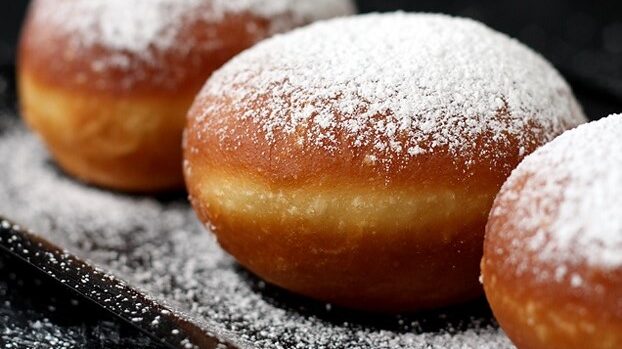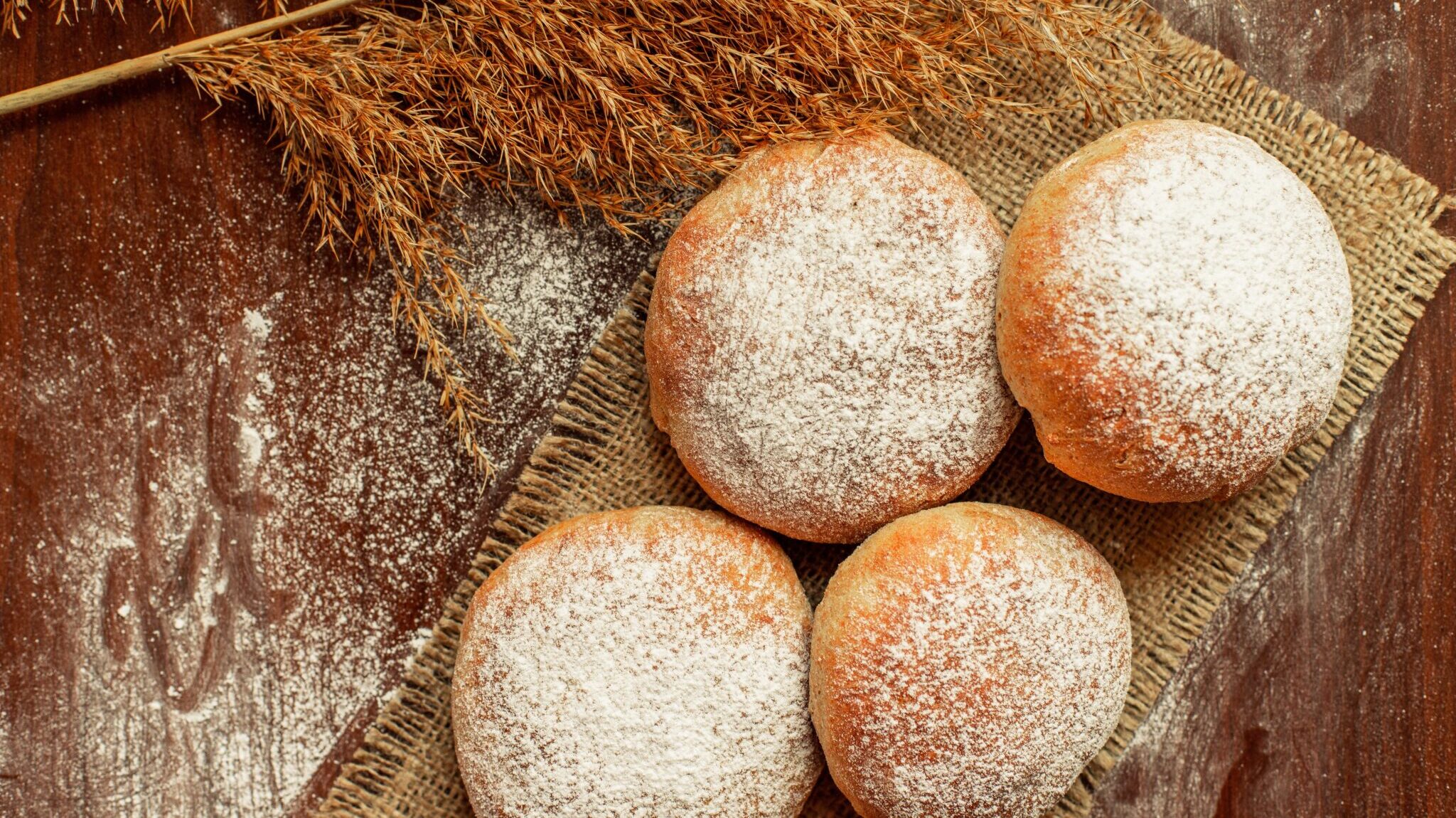It doesn’t seem like much to us today, but once upon a time, muffins were mainly a summer food, they were very filling and you could also add any fruit that was ripening to them. And they were not always fried, the pancakes were often baked dry in the oven, which is a great option for this delicacy. Among other things, this also saved on expensive lard or oil.
Only a few households don’t skimp on food these days, so we start looking according to our grandmothers’ recipes, which often had to feed a lot of hungry people with a very limited budget. And yet they cooked honestly, very tasty and from quality ingredients, especially from what grew in the gardens. Fruit is ripening everywhere now. So if you don’t know how to process even a bit of shriveled fruit, fruit sauce for these baked muffins is a wonderful option. Good, unspoiled fruit, which just isn’t quite pretty to look at anymore, would definitely be shame to throw away. For example, you can process apricots, pears or plums very well, but you can also use gooseberries, currants or blackberries. About blueberries not to mention raspberries.
How about fruit sauce?
Just wash, clean, pick, pit and pour the fruit into a mug. Cut the larger pieces. Add a little sugar, you don’t have to overdo it, a bit of cinnamon, cloves and possibly vanilla and cook for a short time. If you don’t want larger pieces in the sauce, you can blend the sauce or just mash the fruit. If the sauce is very runny, add about a teaspoon or two of potato starch mixed in a little water before the end of cooking. At the end, add a little lemon juice, the sauce will have a better taste and color. If you have an organic lemon, grate some zest into it, it will enhance the taste.
We discovered this recipe for oven-baked pancakes in the cookbook Prvni republika u tolu by Jaroslav Vašák, and it completely thrilled us at the editorial office. They are seriously famous. And if you drizzle melted butter over them before serving, pour over fruit sauce (we added it ourselves, it’s not in the original recipe) and sprinkle with grated gingerbread or cottage cheese, you have a real delicacy. Which also perfectly feeds the whole family. Children especially adore them. So if a horde of children from the neighbors burst into your cottage, you can’t entertain them better.
And now the pancakes. How about them?
Put about half a kilo of fine (smooth) flour, salt and a little lemon zest in a bowl. Mix the yeast from two cubes of sugar, 2 dkg of yeast, a spoonful of flour and a spoonful of milk and let it rise in a warm place, covered. It takes about 15 minutes. Pour two discolored egg yolks and fermented yeast onto the flour, add a cup (about 180 ml) of lukewarm milk, a spoonful of melted lard or butter and work the dough. You can do it manually, but it’s much easier in a robot. Properly processed, the moment it stops sticking to the wooden spoon, it does not stick and is beautifully smooth and supple. Dust the finished dough with flour and let it rise, covered, in a warm place for about an hour. Roll out the risen dough on a floured rolling pin into a thick pancake. Cut out the rounds and leave them to rise for another half hour. covered with a towel. Place the dumplings in a hot oven and bake at approx. 180 degrees until golden brown. Brush them with butter before putting them in the oven.

–
Don’t know how to make a properly risen yeast? Here is our advice:
Yeast is the key to the success of a well-risen dough, but it’s quite simple. Always crumble the prescribed amount of yeast into the flour, sprinkle it with sugar, add a few spoonfuls of warm milk or water and mix it into a slurry, into which mix a little flour. Cover with a towel and leave to rise in a warm place. The mixing is important, without it it is not so easy. Many recipes advise preparing yeast separately, for example in a cup, but it is unnecessary. It will turn out beautifully on flour. But it is important that the liquid (milk or water) is only warm, never hot. When you put your finger in it and it burns, it’s too much. Too high a temperature would kill the yeast in the yeast. Cold, on the other hand, will not support fermentation. Never forget sugar, it speeds up and supports the whole process. On the contrary, salt does not belong to yeast, always add it only to flour. And the last important thing, give the yeast time. Even twenty minutes, the better it rises, the faster the dough will rise.
–


